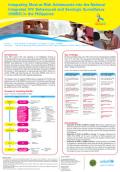Publications on Adolescents
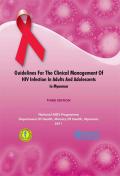
Resource | Guidelines,
These guidelines have been written to serve all medical personal treating patients with HIV in Myanmar. It is meant not only for the National AIDS-STD programme but also for local in international NGOs, hospital doctors, and general practitioners in the public and private sectors.

Resource | Publications,
Adolescents and young people at risk of HIV in Lao PDR include young sex workers, injecting drug users (IDUs), young gay men, other young men who have sex with men (MSM) and transgender people (TG). This report summarizes key issues to be considered in programme design and implementation for most-at-risk adolescents (MARA) and most-at-risk young people (MARYP), and proposes new areas of research on MARA/MARYP.
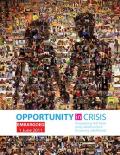
Resource | Publications,
The past decade has held high hopes for reducing the rate of new HIV infections among young people. In 2000, world leaders adopted the Millennium Declaration, affirming their collective responsibility to ensure equitable development for all people, especially children and the most vulnerable, in the 21st century.
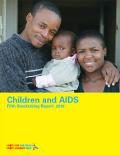
Resource | Publications,
For nearly three decades, HIV and AIDS have been devastating individuals and families with the tragedy of untimely death and medical, financial and social burdens. Although children's concerns have always been present within the great spectrum of need associated with HIV, they have to some extent been overshadowed by the very scale of the epidemic in the adult population.
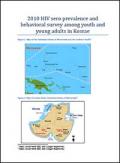
Resource | Publications,
In 2009/2010, an STI biological and behavioral survey among youth and young adults in Kosrae, in the Federated States of Micronesia was conducted. Its aims were to assess the prevalence of key STIs among adults in Kosrae as well as evaluate certain knowledge and risk behaviours in order to better identify how to deliver targeted interventions aiming to reduce risk of HIV and STI infections. 361 participants aged between 15 and 49 were recruited from Kosrae.

Resource | Guidelines,
This guideline revision was conducted in accordance with procedures outlined by the WHO Guidelines Review Committee and is based on the GRADE approach to evidence review. The process involved four separate working groups: the Internal WHO ART Guideline Working Group, the ART Guideline Drafting Group, the external ART Peer Review Panel and the full ART Guideline Review Committee.
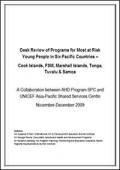
Resource | Publications,
The purpose of the assignment, as stated in the Terms of Reference, was to collect information to identify the context, groups and location of Most at Risk Young People in the Pacific and determine the extent to which specific interventions have been implemented to reach this group of young people.

Resource | Guidelines,
The guideline continues to follow the principles of a public health approach, aiming to optimize outcomes, including the quality of life and survival, of people living with HIV (PLHIV), and to act as a reference tool for countries to adopt and adapt according to their national circumstances.
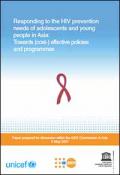
Resource | Publications,
The major recommendation of this paper is to strongly increase resources available for age- and gender- appropriate HIV prevention and support services for young people engaging in high risk behaviors: injecting drug users, young women and men involved in sex work and young men who have sex with men.






